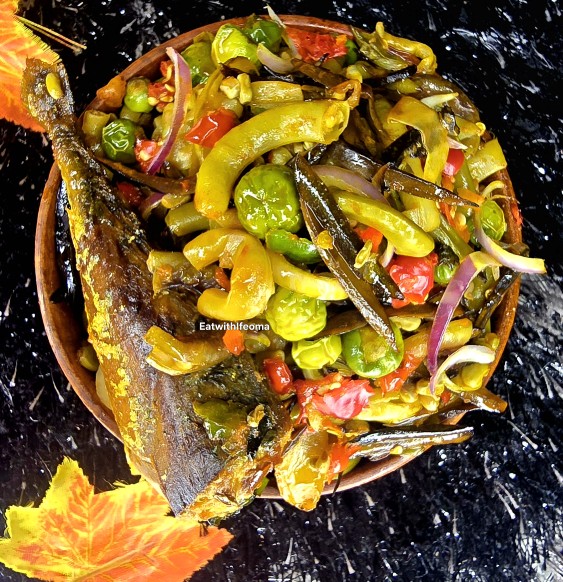Learn how to cook fresh akidi- a sumptuous meal.
If you’ve ever craved a bright, hearty and of course colorful Nigerian dish that lands somewhere between a salad and a warm side, fresh akidi is your new favorite.
Think tender, green, bean-like pods that cook fast and keep a gentle crunch. Fold in ukpaka (ugba) for tangy depth of which ukpaka is packed with nutrients that are beneficial to the body;
add ayara (the tiny green seeds from local garden egg) for delicate texture, then gloss everything with warm palm oil, onions, and fresh pepper.
It’s simple, celebratory, and 100% delicious. (Fresh akidi can be harvested and cooked green; ukpaka is the fermented African oil bean used widely in southeastern Nigeria. )
What exactly is fresh akidi?
Akidi is African green beans. In many Igbo communities akidi is enjoyed fresh and green, similar in look to slim green beans; it cooks quickly and keeps its snap when you don’t overdo the heat.
The flavor is clean and slightly grassy, making it a perfect canvas for palm oil, onions, and spice. Ayara refers to tiny garden-egg (African eggplant) seeds—green, soft, and added raw for micro-crunch and a gentle taste; (Garden egg—called anyara/ahara in Igbo—is a beloved staple; its fruits and leaves feature in classic dishes.).
Ingredients (serves 4)
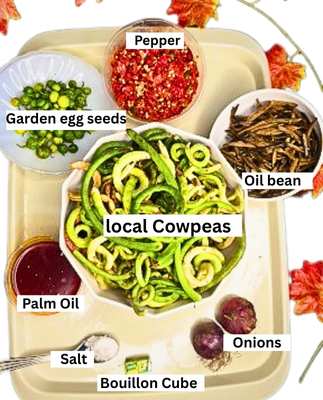
- 450 g fresh akidi (green pods), trimmed
- ½ cup ukpaka (ugba), thinly sliced
- 2 small red onion, very thinly sliced
- A teaspoon of fresh hot peppers (scotch bonnet or habanero), grated or blended.
- ½ cup palm oil, gently warmed
- 1 Maggi seasoning cube (or your preferred brand), crumbled
- ½–1 tsp salt, to taste
- 1–2 Tbsp ayara (tiny green garden-egg seeds), raw.
A quick Note on the ingredients
Akidi brings snap and sweetness.
Ukpaka adds tangy, fermented depth and chew. (It’s the edible, fermented African oil-bean cotyledon.)
Ayara stays tiny and green—more texture than bold flavor—so it never competes.
Palm oil + Maggi deliver silk and umami; onions + fresh pepper supply brightness and heat.
Step-by-Step Guide on how to cook fresh akidi
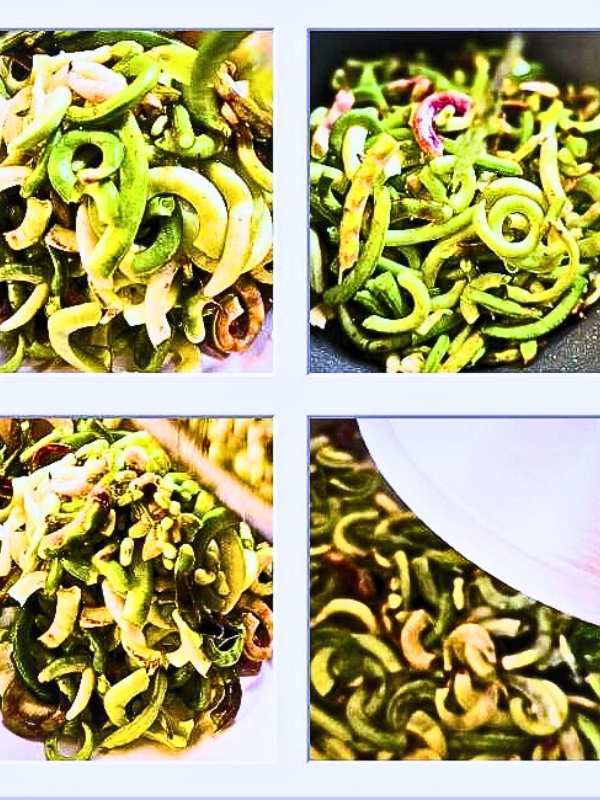
1. Akidi preparation: Cut each of the akidi into two or three with your hand and not knife) depending the length you want it to be. Wash it two or three times with clean water.
2.Cooking the akidi: Place a pot on fire and add clean water. Add the trimmed fresh akidi and cook until just tender with a crisp bite, 8–10 minutes depending on thickness. Bring down and empty in a sieve.
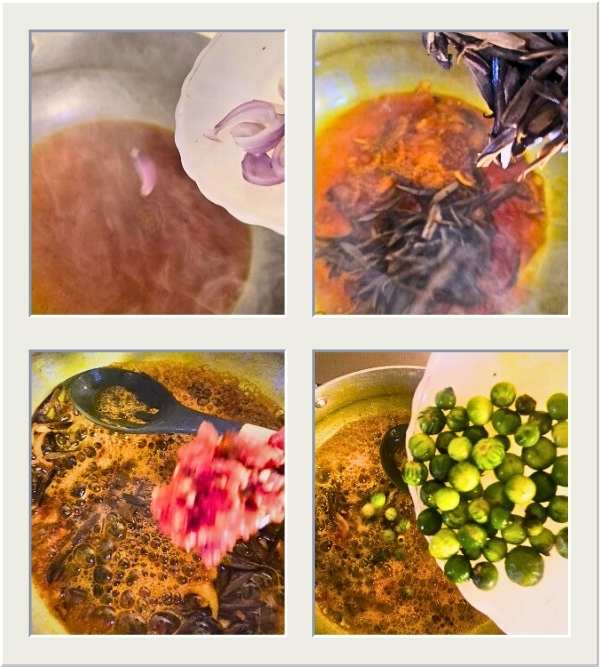
- Flavor base: Place an empty pot on fire, add palm oil and heat slightly. Add sliced onions, ukpaka, and chopped fresh pepper. Stir to combine. Add the garden egg seeds, add salt and crumble in the Maggi.
4. Fold in akidi: Add cooked akidi and stir thoroughly to combine. Taste and adjust seasoning if need be.
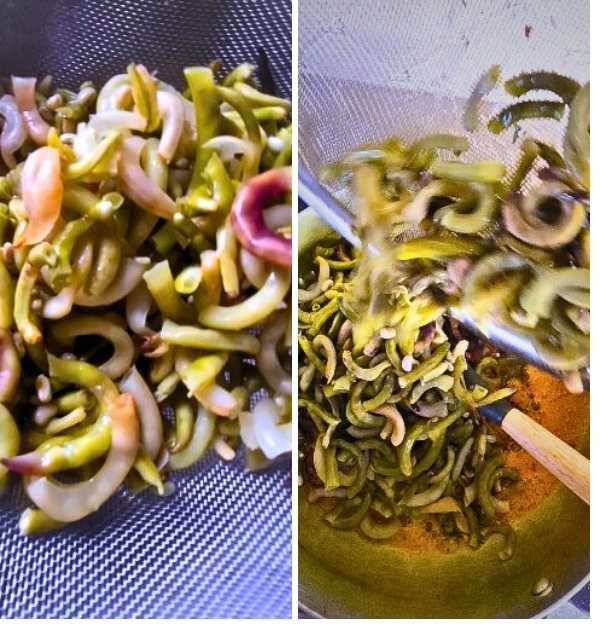
Step 5: Garnishinig: Garnish with extra thinly sliced onions and fish for extra richness.
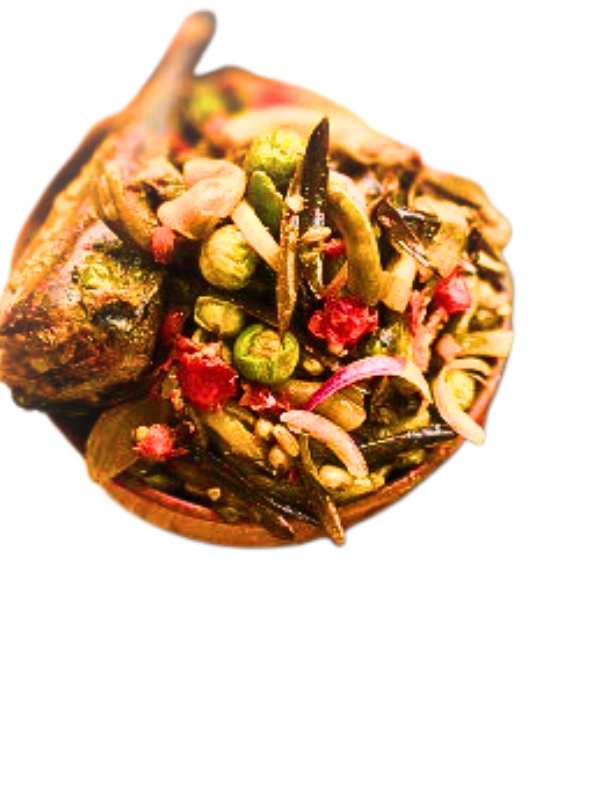
Tips on cooking fresh akidi
Heat control: If serving kids, seed the pepper or use milder chilies.
No Maggi? Use ½ tsp low-sodium bouillon powder or a splash of well-seasoned stock reduced to a spoonful.
Palm-oil polish: If your palm oil tastes flat, whisk in a pinch of salt and a squeeze of lime to brighten.
Ayara alternative: When you can’t get garden-egg seeds, finely dice green garden eggs themselves for a similar fresh bite.
How to Serve
Serve as a whole meal.
Storage
Refrigerate leftovers in a lidded container for up to 2 days; refresh with a teaspoon of warm palm oil and a pinch of salt before serving.
FAQ:
1) Do I need to soak fresh akidi?
No. Fresh, green akidi cooks quickly therefore, treat it like tender green beans and blanch just until crisp-tender.
2) Can I use dried akidi for this recipe?
This version is designed for fresh akidi. If using dried akidi, that’s a different prep (soaking/longer cooking) and yields a softer, beanier texture—great, but a separate dish.
3) What is ukpaka (ugba), and why is it tangy?
Ukpaka is fermented African oil-bean slices, its fermentation creates its signature tang and savory depth, rinse lightly if your batch tastes too strong.
4) Do I toast ayara?
No. Ayara is tiny and green which adds raw delicate crunchy taste
5) Is palm oil required?
Palm oil gives authentic color and silk; substitute by using a neutral oil plus a little annatto or paprika for color—flavor will be different.
6) How spicy should it be?
Customize it by using half a pepper, taste and add more if necessary
7) What can I pair this with?
Pair oiled yam, ripe or unripe plantain, or grilled fish/chicken all make excellent companions.
You may also like:
